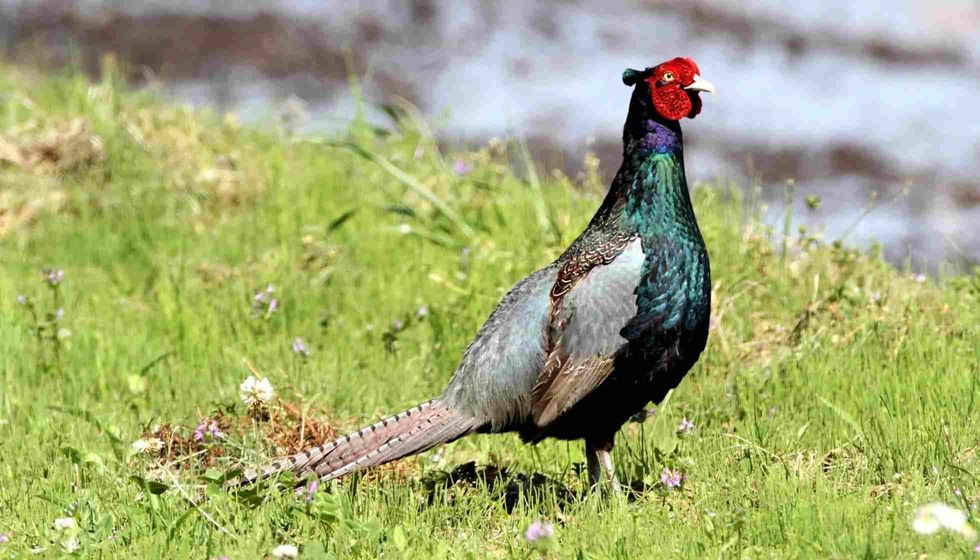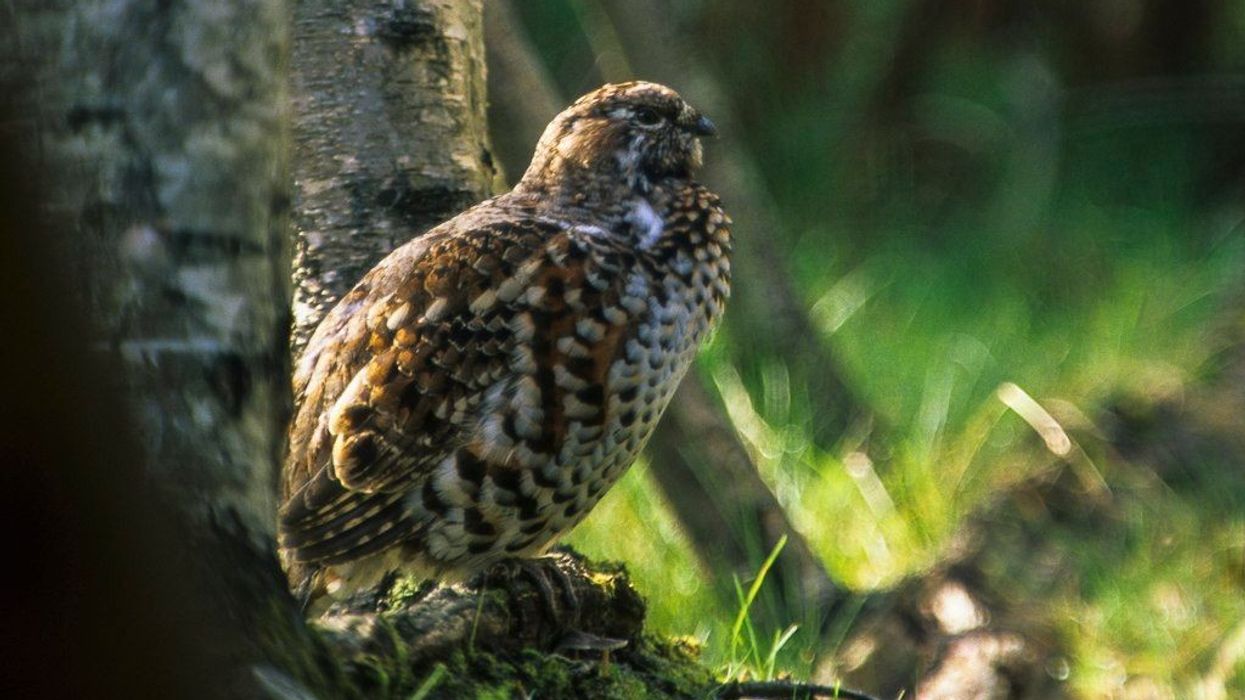Green pheasant (phasianus versicolor) also known as Japanese pheasant is a species of bird that is predominantly found in Japan and is a subspecies to the common pheasant (Phasianus colchicus).
The green pheasant is also associated with three other subspecies of itself which are the southern green pheasant, the Pacific green pheasant and the northern green pheasant. The green pheasant’s relative, the common pheasant, is a popular game bird and is hunted for it.
In fact, there have been successful attempts to artificially introduce them to certain regions in the Americas.
The Japanese green pheasant (P. versicolor) is assigned the status of the national bird of Japan as the species is endemic to Japan. Despite this, attempts to introduce the green pheasant for the purpose of game hunting have largely been failures, except in the country of Hawaii.
Keep reading to find out more about the national bird of Japan. After, do check out our other articles on golden pheasant facts and pheasant facts as well.
Green Pheasant Interesting Facts
What type of animal is a green pheasant?
The green pheasant (phasianus versicolor), also known as Japanese green pheasant, is a type of bird that belongs to the family of common pheasant (Phasianus colchicus) .
What class of animal does a green pheasant belong to?
The green pheasant is classified as a bird and belongs to the biological class of aves due to the fact that it satisfies the requirements of having feathers, vertebrate columns, beaks, lightweight skeletons and reproduce by laying hard shelled eggs.
How many green pheasant are there in the world?
The green pheasant is not an endangered species of bird which is why it is classified as a pheasant species of least concern in terms of its conservation status. However, there is a lack of definitive quantitative data regarding its global population.
The majority of the population of green pheasant is found in Japan, as this bird is the national bird of Japan.
Where does a green pheasant live?
The national bird of Japan has a fairly wide range of habitat that includes areas populated by human beings as well as wild regions. These areas of habitat include woodlands, brush, parklands, grasslands, forest edges, and farmlands. This species is endemic to Japan but does not mix-up with the other native Japanese pheasants.
What is a green pheasant's habitat?
Green pheasants have a fairly wide range of habitat that includes areas populated by human beings as well as wild regions. These areas of habitat of national bird of Japan include woodlands, brush, parklands, grasslands, forest edges, and farmlands.
Who do green pheasant live with?
Green pheasants have been known to live in flocks, like common pheasants, in harmony with other pheasants, and at other times, either alone or in pairs. Japanese birds do sometimes live with human beings, however, not in the manner a dog or a cat would.
How long does a green pheasant live?
The average life expectancy of this pheasant, endemic to Japan, when it is held in captivity is two years in the wild, this native bird has a life of around one year only.
How do they reproduce?
Green pheasants are mature enough to reproduce at the age of one year. Male pheasants, roosters and cocks have been known to engage in reproductive activities with multiple hens during the mating season.
Generally, this species of bird have been observed to breed in the months of March, April, May and June and when it does, about anywhere between 6-15 eggs are laid in a single clutch. The green pheasant then incubates these eggs for a little over three weeks.
What is their conservation status?
The green pheasant is classified as a species of least concern with respect to its conservation status. This species, despite being one of least concern, has been projecting decreasing population trends and these trends are largely attributed to the sport of hunting them and consuming their meat, by human beings.
Green Pheasant Fun Facts
What do green pheasant look like?
Starting with their color schemes, the green pheasant typically sports breast and neck plumage in shades of dark green and male green pheasants or cocks have red wattles, and bluish hoods.
They also sport pale colored greyish tails that have bands on them.
Moving on to the female green pheasant or hens, these birds have dark brown plumages and feathers with hints of lighter color toward the end of the wing feathers. The female green pheasant’s tail is shorter than that of the male and these color schemes vary slightly from region to region and sub species to sub species.
The female pheasants are smaller than male pheasants with a pale brown plumage, otherwise males and females look quite identical.

How cute are they?
Green pheasants are fairly cute to look at but are quite timid by nature. Hence, it is quite difficult to get a good look at it when it is in its natural habitat. Their beauty is amplified by the bright colors that they have including the dark green plumage, violet neck, red face and purplish-green tail.
How do they communicate?
Green pheasants communicate using peculiar sounds that are best described as 'kut tuk, kut tuk' or 'ke en ke en'. They typically make these sounds even while simply walking or waiting but these sounds intensify when they wish to communicate danger to one another or are threatened by some predator or abrupt movements around it.
How big is a green pheasant ?
A green pheasant’s body is fairly small; however, their tail, which is usually about 20 in (50.8 cm) long, contributes to their total length that is about 20-36 in (50.8-91.44 cm) long. Females are generally much smaller in comparison to males owing to the fact that their tails are not as long as their male counterparts.
These birds are pretty much as big as a regular chicken, maybe a little bigger.
How fast can a green pheasant fly?
Green pheasants are fairly fast birds in flight, especially when they are under threat of predation. Their average speed falls within about 50 mph (80.4 kph); however, these birds have the potential to reach speeds of 60 mph (96.5 kph) when under threat of predation.
How much does a green pheasant weigh?
A green pheasant typically weighs about 3 lb (1.36 kg), with female green pheasants usually weighing a little less than that at around 1.8 lb (0.81 kg).
What are the male and female names of the species?
Male green pheasants are referred to as cocks or roosters, whereas female green pheasants are referred to as hens. The females are smaller than males with a dull brown plumage and dark spots.
What would you call a baby green pheasant?
Baby green pheasants have not been allocated any specific name. Therefore, they are normally referred to as chicks.
What do they eat?
Green pheasants are typically omnivorous birds that feast on tiny insects and worms along with considerable amounts of plants, grains, seeds and so on.
Are they dangerous?
No, green pheasants are not at all dangerous. This is mainly because this species of bird is particularly timid and afraid.
Would they make a good pet?
Green pheasants are best kept as pets in homes that have plenty of outdoor space. Therefore, a green pheasant would only be a good pet if they are raised on farms that have plenty of land for them to make use of. Green pheasants can also be kept in aviaries and backyards, similar to chicken.
Did you know...
Green pheasants are the national bird of Japan.
Green pheasants have the ability to jump high in the vertical direction while escaping from prey. This is because these birds have really strong legs.
Even though the green pheasant can fly well, this species prefers to spend its time on the ground where it can forage for its food.
Why is the green pheasant the national animal of Japan?
In Japanese culture, the green pheasant is unofficially considered the national bird of the country owing to its references in ancient folk tales of Japan. In these folk tales, the green pheasant was said to be the messenger of the Sun Goddess, Amaterasu who was also known to be the ruler of the heavens.
Since this bird was so closely affiliated to the ruler of heaven, it became associated with power.
How do I care for a pheasant?
Pheasants are typically prey birds and lie very low in their respective food chains. So the first order of business must be to provide them with a secure space that can protect it from dogs, eagles, cats and so on.
Further, pheasants should, ideally, have a mate but it is desirable to keep no more than one male since these birds get into fights in order to prove themselves to be the alpha. Their food should consist of roughly 30% of protein when they are young and as they grow up, this percentage should reduce.
By the time these birds are old enough, they can be fed commercially available bird feed and corn along with fruit and nuts.
Most importantly, never give your pheasant cold drinking water since this has the potential to kill it. Instead, give it warm or tepid water with electrolytes.
Here at Kidadl, we have carefully created lots of interesting family-friendly animal facts for everyone to discover! For more relatable content, check out these grouse facts and tawny owl facts.
You can even occupy yourself at home by drawing one on our green pheasant coloring pages.









